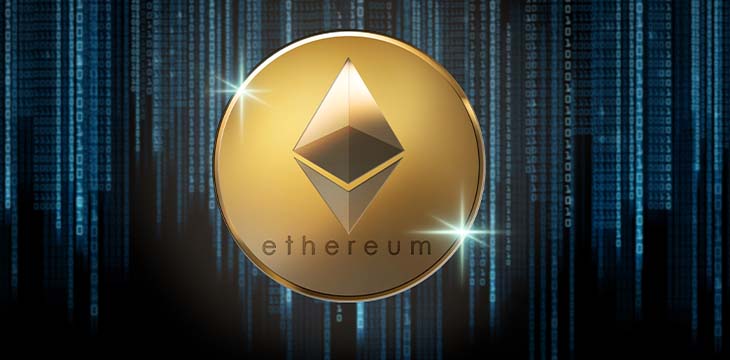|
Getting your Trinity Audio player ready...
|
“Ethereum 2.0” appears to have been delayed again, with developers now saying it won’t launch in June 2022 as predicted. The network is fast becoming the “Duke Nukem Forever” of the blockchain world, with each passing year adding to risks that the end product will disappoint and users will find something better to do.
Leading Ethereum core developer Tim Beiko posted a response to a miner’s question on Twitter on April 13, saying the upgrade date is unknown but definitely not in June:
It won't be June, but likely in the few months after. No firm date yet, but we're definitely in the final chapter of PoW on Ethereum
— timbeiko.eth (@TimBeiko) April 12, 2022
“2.0” is the nickname for Ethereum’s long-proposed protocol shift from its original proof of work (PoW) confirmation system to proof of stake (PoS). Falsely touted as more energy-efficient and the only chance for Ethereum to scale, it represents major changes in both the network’s technical structure and economic rules.
For an indication of how long Ethereum 2.0 has spent in development so far, here’s a short clip of Vitalik Buterin predicting a 2016 launch:
Vitalik said Ethereum 2.0 will be released in 2016. Now it's 2022 – six years after his original prediction – and now he says that Ethereum 2 reached 50% on its way to be finished. Wake up people. Biggest scam in crypto history. https://t.co/kvyaNRaP1g pic.twitter.com/8sL1wonX4M
— Mr. Huber🔥🦅🔥 (@Leerzeit) January 5, 2022
Ethereum has always been experimental, leading to frequent accusations it’s more of a “hobby platform” for developers than serious financial infrastructure. Its founders originally sought to expand on Bitcoin’s digital cash system into a full blockchain-based computation network that could run sophisticated contracts and applications.
To date, it has used a similar proof-of-work confirmation system to Bitcoin’s. Though PoW has proven itself the most trustworthy and secure way to confirm new entries on a blockchain, it has been inadequate at handling the kind of data traffic Ethereum produces based on Vitalik Buterin’s failure to properly architect his protocol at the begininng. Developers have always understood this shortcoming, proposing an eventual switch to proof of stake (PoS) not long after Ethereum’s initial launch.
Ethereum, since then, has seen its user base and ecosystem grow exponentially, and attempts to alter the protocol rules to accommodate PoS have resulted in increasing technical complexity. It has added multiple confirmation/consensus and transaction layers, running alongside several “merge testnets” to try new techniques. At some point, all these must combine into a single network as PoS Ethereum finally goes live.
Testnets like “Kiln” and “Kintsugi” recently completed their mergers with the Ethereum main network, and developers had predicted PoS Ethereum was on track to launch for real around mid-2022. Given the various upgrade hiccups and delays over the years, many viewed this prediction as ambitious.
Meanwhile, the evolution of BSV (which uses the original Bitcoin protocol) has proved Bitcoin was always capable of running contracts and applications, while retaining the PoW confirmation rules. Its limitations, which still exist on BTC, result from artificial limits imposed on its scripting language and transaction block capacity, marketed as necessary for “decentralization.”
Ethereum Forever
The latest revelation met with a mixture of disappointment and cynicism on social media, prompting predictable arguments between critics and diehard supporters, the latter maintaining the new Ethereum was all-but-ready to go live and that any delays at this point are just developers ironing out last-minute kinks.
https://twitter.com/jgstensby/status/1514275976238280704
The comparison to Duke Nukem Forever comes from a notorious saga in the late 1990s and early 2000s in the video game world. Developers 3D Realms had produced three games in the Duke Nukem series by 1996 which became wildly popular and expected to release the ultimate sequel game to rule them all soon after. Instead, “Forever” lived up to its name by spending 15 years in “development hell” and becoming synonymous with the software concept of vaporware. After an almost complete replacement of its original development team in 2009, director George Broussard promised an eventual launch “when it’s done.”
The game finally launched two years later, in 2011, to mostly negative reviews and sales figures around half its initial expectations. By that stage, the gaming market and culture that had driven its popularity in the first place had moved on, and the end product showed visible scars from its patchwork development and multiple creative visions.
Could Ethereum 2.0 suffer a similar fate? Already, several dissatisfied project developers have moved to other networks. The popular CryptoFights game, which now makes up more than 90% of BSV’s current data traffic, started out as an Ethereum project before developers grew frustrated with that network’s congestion and high processing fees… in 2019.
Hurry up, but don’t rush
To be fair, no one wants to see Ethereum 2.0 rushed to market if it’s not properly tested and ready to roll. The network remains one of the blockchain world’s most well-known and heavily used. ETH has a unit price of over US$3,100 (its high point in 2016 was $20.50), and the current total market cap is US$82.7 billion. The latter figure is just the value of ETH units, with the value invested in businesses running on the network much higher. It has driven both the ICO and NFT crazes, as well as blockchain’s latest buzzword concepts, DApps (distributed apps) and “DeFi” (decentralized finance).
Any flaws in such a major protocol change would spell disaster for that ecosystem, with other blockchains like Solana and BSV already waiting with fireman’s nets to catch any devs who leap from the building.
As well as the technical risks a live switch to PoS presents, Ethereum also faces the potential problem that its PoW miners (who use GPU rigs to profit from block confirmations) will not leave the network in a timely manner. Eventually, the protocol code will force them off the network by making blocks impossible to mine, but the longer they stay, the longer a full merge/launch is delayed. Even if it works, proof-of-stake presents its own security and legal risks.
All this points to a system that was poorly planned and unnecessary from the start. Improvements and upgrades to Ethereum’s infrastructure have usually been reactions to problems the network has encountered, costing investors money and shedding users.
Fundamentally altering protocol and economic rules on a live (and growing) network is a serious challenge, with no guarantees of long-term success or user loyalty. Multi-billion dollar businesses should not have to risk their own models on a base that shifts like this, and will ultimately gravitate towards more solid and secure systems. Bitcoin (as BSV) promises “set in stone” fundamental rules, guaranteeing that a transaction constructed in 2009 will still be valid on the same blockchain a century from now. This is the only sort of foundation on which the world’s new digital economy should build itself.
Follow CoinGeek’s Crypto Crime Cartel series, which delves into the stream of groups—a from BitMEX to Binance, Bitcoin.com, Blockstream, ShapeShift, Coinbase, Ripple,
Ethereum, FTX and Tether—who have co-opted the digital asset revolution and turned the industry into a minefield for naïve (and even experienced) players in the market.

 01-05-2026
01-05-2026 




